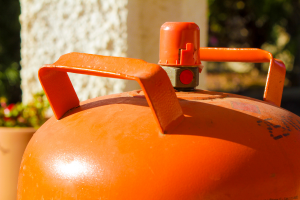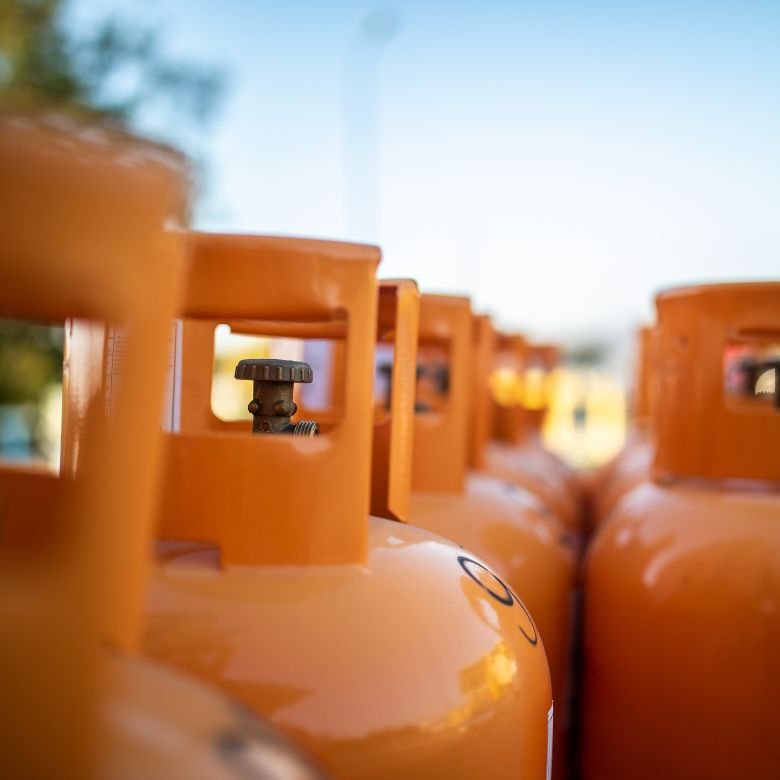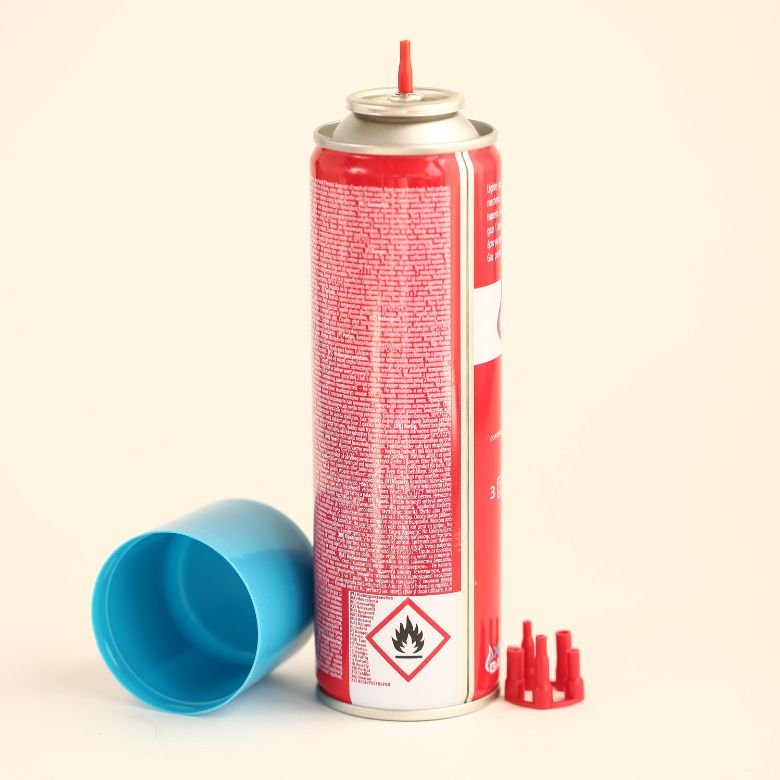Butane is an organic chemical compound classified to the homologous series of alkanes. Large amounts of it are obtained from oil and natural gas processing. Butane is also produced by natural biological decomposition, including plants in particular. Its properties warrant a number of industrial applications such as foodstuffs, refrigeration, chemical and petrochemical sectors, among others.

Butane: general characteristics
Butane is fourth in the homologous series of alkanes, also known as saturated hydrocarbons. The molecule of butane is made up of four carbon atoms joined by single saturated bonds. Each carbon atom has hydrogen atoms attached to it (in organic compounds, the carbon atom is always tetravalent). Butane has two isomers. Isomers are compounds that have identical molecular formulas (i.e. the same number of individual atoms in the structure), but differ in their structural formulas (i.e. the arrangement of individual atoms in the molecule). Butane comes in two isomeric forms: n-butane and 2-methylpropane (also commonly known as isobutane). The isomeric form of butane is formed when terminal -CH2 is detached from the linear molecule. A propane molecule is then obtained, to which (precisely to the second carbon atom) a -CH2 group is attached. This results in a branched-chain compound with the same number of atoms as the unbranched molecule. It is worth to note that according to organic compound naming conventions, the prefix “n” is used to refer to a linear molecule of butane, while “iso” is added as a prefix to its branched molecule. The said type of isomerism above is referred to as constitutional (or structural) isomerism. Importantly, butane is not considered a greenhouse gas. It does not deplete the Earth’s ozone layer, making it an environmentally friendly fuel.
The physical and chemical properties of butane:
- Colourless gas.
- It has a faint odour, resembling natural gas.
- It is highly flammable.
- In contact with air, it forms an explosive mixture.
- Butane vapour is heavier than air.
- It is poorly soluble in water.
- Easily soluble in ethanol and diethyl ether.
- It is chemically stable.
- It has a toxic effect on the human body.
Butane is found in natural gas and crude oil, two main sources of both the straight-chain and branched-chain forms. Large quantities of butane are also obtained from oil refining. The gas is a fossil fuel formed from the remains of dead plants and animals, decomposing deep beneath the Earth’s surface. Butane isomers present in natural gas can be separated from higher concentrations of other gaseous constituents, such as methane and ethane, by absorption in a light oil. Butane stripped from the absorbent along with propane is marketed as liquefied petroleum gas (LPG). Butane isomers formed by catalytic cracking and other refinery processes are also recovered by absorption into a light oil. At room temperature, butane is a gas but it is easily converted to a liquid, so it is usually stored compressed in sufficiently strong steel cylinders. It is usually stored in very well-ventilated rooms and away from sources of ignition.
Laboratory methods of obtaining butane include hydrogenation of unsaturated hydrocarbons. Such a process is used, for example, on butenes and butynes, or alkenes and alkynes, respectively. The unsaturated (double and triple) bonds present in their molecules are highly reactive and easily hydrogenated. During this process, hydrogen molecules are directly added to unsaturated compounds, resulting in a molecule with saturated bonds in the carbon chain, such as butane. Another method is the so-called Wurtz reaction. Wurtz synthesis is aimed at elongating the carbon chain. This reaction involves two alkyl halides, which lose their chloride ions when treated with sodium. Their alkyl chains are joined with simultaneous release of sodium chloride.

Characteristic reactions of butane
Some of the basic reactions of butane are combustion reactions. Depending on the amount of oxygen involved in the reaction, the combustion reaction may be either complete or incomplete. In the former case, the amount of oxygen during combustion is unlimited. The end products of such a reaction are carbon dioxide and water. Considering the amount of energy obtained, complete combustion is best. However, if there isn’t enough oxygen, incomplete combustion occurs. Depending on the amount of oxygen available, two incomplete combustion reactions are possible. The products of incomplete combustion include either poisonous carbon monoxide (II) and water or carbon and water.
Butane is a chemically stable compound. However, you should remember that it forms an explosive mixture with air. It also has explosive reactions with chlorine dioxide and strong oxidising agents. It also reacts with barium peroxide at high temperature. Importantly, it does not exert corrosive effects on metals. Important reactions of butane also include its halogenation. During this process, butane usually reacts with chlorine or bromine, resulting in halogen derivatives: chlorobutanes and bromobutanes, respectively. It is important to note that the presence of four carbon atoms in the alkyl chain, makes it possible to obtain a variety of derivatives, depending on the chlorine or bromine substitution site. The direction of substitution is determined primarily by the ordering of the carbon atoms in the molecule. Experimental data clearly show that the higher the order of the carbon atom in butane, the easier its substitution. Chlorination or bromination of butane usually results a mixture of halogen derivatives. Importantly, bromination is a more selective reaction – during the process, the yield of the main product reaches up to 99%.
Key butane applications
- Butane is one of the chemical compounds used in the food industry. It is one of the substances used in the production of vegetable oils. The technological functions of butane primarily include involvement in the formation of aqueous emulsions in aerosol. This enables production of spray oils, which are then perfect for greasing baking trays, for example.
- The compound is an important ingredient in the chemical industry. It is used in a number of syntheses and processes. It is used as a solvent, a coolant and a reactant in the synthesis of synthetic petrol. It also serves as a carrier gas.
- Butane is widely used as fuel in portable gas stoves and cylinders for use e.g. at camping sites. It is also used for refilling lighters. When you click the button, the gas kept inside the lighter ignites in contact with a spark.
- The compound acts as a carrier gas in products such as hairsprays, deodorants, air fresheners or spray paints.
- Butane is also an important refrigerant. It works well for small, portable camping fridges. Both isomeric forms of the compound can be used as a refrigerant. In recent years, they have been gaining attention because of, among others, their lower price compared to other refrigerants. Butane is often used in refrigeration in the form of a propane/butane mixture. However, it should be noted that it does not perform well in air conditioning, for example.
- Butane may be used as a petrol additive. to increase its volatility. N-butane subjected to isomerisation processes and converted to isobutane, together with certain hydrocarbons such as butylene, form valuable high-octane petrol components.

Key butane derivatives
Butanol
Butanol, or ethyl alcohol, is an alcoholic derivative of butane. It may take two isomeric forms, 1-butanol (n-butanol) and 2-butanol (sec-butanol). Butanol comes in the form of a clear, colourless liquid. Its solubility in water is lower compared to ethanol or propanol. This is due to the presence of as many as four carbon atoms in the chain, which results in its hydrophobic properties. Butane is easily soluble in such compounds as benzene, acetone and diethyl ether.
It is mainly used in the chemical industry. It is one of the materials used for the production of esters, paints, varnishes and resins. It is also used as an additive for plastics. Butanol is an important ingredient in products aimed for agriculture. Given its properties, it is also used as a solvent. Interestingly, it is being considered for use as a fuel because of its properties similar to those of petrol.
Butanoic acid
An acidic organic derivative of butane is butanoic acid. It is an example of a carboxylic acid. One of its characteristics is that it has a -COOH group in its molecule. Butanoic acid is commonly called ‘butyric acid’ because it was detected, among others, in rancid butter. Butanoic acid is a greasy liquid with a specific unpleasant odour. It is easily miscible with water and ethanol. Its density is slightly lower than that of water. Esters of butanoic acid, such as sodium butyrate, are considered important.
Butanoic acid is primarily an important material for obtaining various butyric acid esters, such as sodium butyrate. Low-molecular-weight butyric acid esters mostly have pleasant aromas and tastes. As a consequence, they are used as food and perfume additives. Derivatives of the acid are approved food flavourings. Due to its strong odour, the acid is also used as an additive to fishing baits.
- https://www.ciop.pl/CIOPPortalWAR/appmanager/ciop/pl?_nfpb=true&_pageLabel=P27600224401410431343241&id_czynn_chem=72
- https://pubchem.ncbi.nlm.nih.gov/compound/Butane
- https://echa.europa.eu/pl/information-on-chemicals/cl-inventory-database/-/discli/details/91685